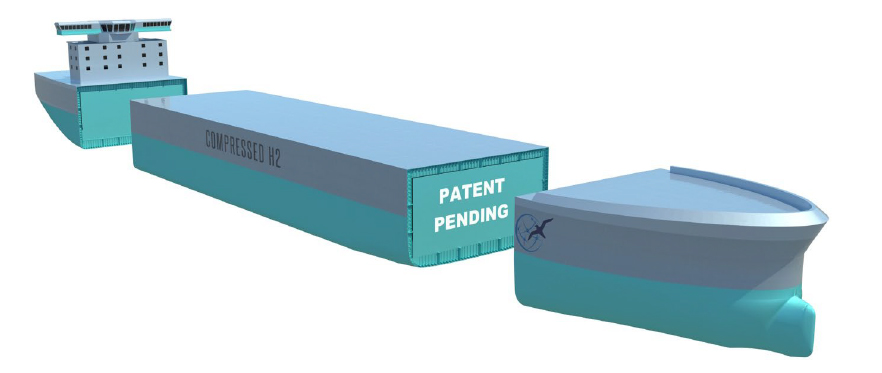Concept Design for World’s First Compressed Hydrogen Carrier Ship

With global attention on hydrogen as a source of clean, renewable energy, a growing list of companies is seeking to become early movers in the future energy market. An Australian company named Global Energy Ventures (GEV) presented what it believes will be the world’s first compressed hydrogen ship which could play a key role in the development of a hydrogen export industry.
GEV is seeking to develop a new class of ship for the marine transportation of hydrogen. Using the company’s experience with marine pressure vessels they believe it will be possible to build a commercially viable compressed hydrogen ship for the export and transportation of the clean energy source.
Founded in 2017, GEV is focused on developing integrated marine pressure vessel solutions transporting energy to regional markets. The company has been working to commercialize its design for a compressed natural gas vessel, the CNG Optimum, which it says features a low-cost, volume efficient design. Using a patented design, the CNG Optimum maximizes the amount of CNG that can be stored in the hull running tubing the length of the ship’s cargo hold. GEV is promoting an integrated “pipe to pipe” business model which includes loading, shipping, and unloading. GEV holds patents on the design and the American Bureau of Shipping (ABS) issued in 2019 its formal letter granting approval for construction of the CNG 200 Optimum ship as designed, subject to continued compliance with applicable ABS rules and guidelines.
Using the same experience, the company’s marine engineering and development teams have established an accelerated program to develop the technical specifications for an innovative compressed H2 ship, including the cargo containment system, to be designed in accordance with ABS rules and guidelines. GEV is targeting the first milestone in the project, achieving an Approval in Principle (AIP) from ABS, in the first half of 2021.

Using the same principals as the CNG ship, GEV is proposing a compressed hydrogen ship - courtesy Global Energy Ventures
According to GEV, the H2 ship will have a storage capacity of up to 2,000 tons (23 million m3) of compressed hydrogen. The containment system will include ambient temperature hydrogen at a target pressure of 3,600 psi (or 250 bar). The company anticipates obtaining patents on the ship and its cargo systems.
With the advancement of fuel cell technology for vessels, GEV says it also intends to include engines aboard the ship that burn pure hydrogen to create a zero-carbon shipping solution. While they believe that the size of the vessel will be optimal for the commercial export market, GEV will also evaluate smaller capacity ships for demonstration purposes based it says on specific pilot export projects.
In announcing this project, GEV said that it believes the key to driving down the economics of hydrogen production will be scale, and the key to scale will be developing an export industry. The company's focus will be on the Australian export projects currently under development. They said that several of the projects are entering the pilot phase and also highlighted that Australia has also established future hydrogen export agreements with regional customers in Japan, Korea, Singapore, and recently Germany.
While work is proceeding on developing the detailed engineering for the H2 ship, GEV reports that it has also commenced discussions with several technical groups to identify viable options for a compressed hydrogen supply chain. The company has commenced the process of identifying a shortlist of suitable projects already through the pilot stage of hydrogen production and that have a strategy to export hydrogen from the North West of Australia into the Asia Pacific region.
It is anticipated that the H2 ship will qualify for Australian government R&D programs. GEV is currently assessing options from existing and newly announced R&D funding programs.
